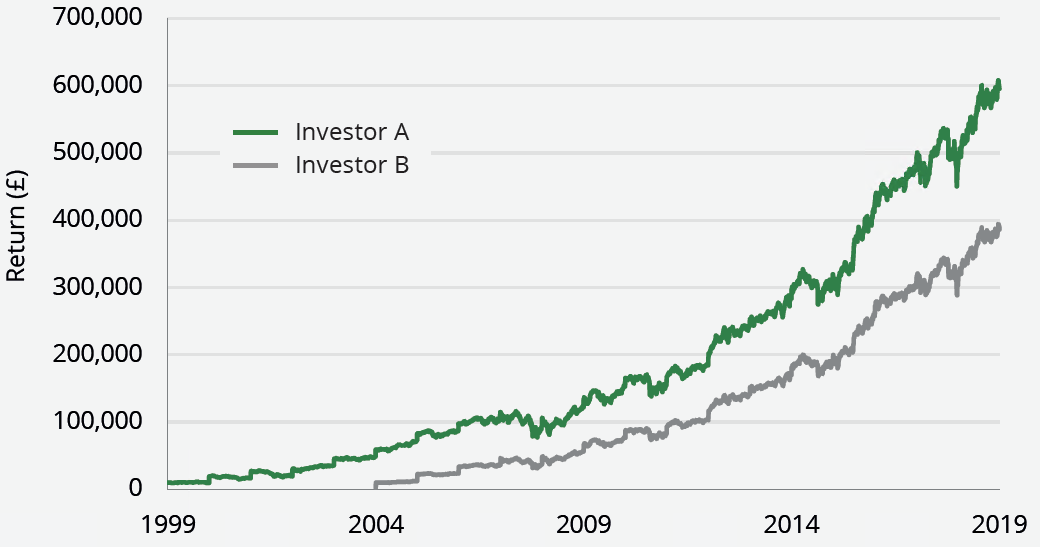As ITV’s latest dramatization, Quiz, portraying the coughing scandal on ‘Who Wants to Be a Millionaire’ came to an end last week, I ask how easy is it to become a millionaire?
- Impossible
- Complete fantasy
- Phone a friend
- Absolutely achievable (*cough*)
“This time next year we’ll be Millionaires”
Well maybe not by next year, but reaching millionaire status is the culmination of diligent saving, professional advice and the discipline required to hold back from withdrawing and spending along the way.
The humble Individual Savings Account (ISA) turned 20 last year and remains free from income tax and capital gains tax making it one of the most tax-efficient products available for saving.
Over the past 20 years, successive chancellors have tweaked the tax-free savings vehicle, and introduced more products to the ISA family. Launched in 1987, the personal equity plan, or PEPs initial tax-free annual allowance was £2,400, steadily rising to £7,000 in 1999 when it was superseded by the ISA, to today’s annual allowance of £20,000 (£9,000 for Junior ISAs).
Since the creation of the ISA in 1999, investors have used the accounts to shelter £8.74tn from the taxman, netting them more than £30bn in tax savings.1
If you had utilised your PEP and ISA allowance every year since 1987 you could have contributed over £200,000 by now. Over time, this capital would have multiplied significantly if invested in the stock market.
Getting there could be easier than you think
Compound interest can have an incredible effect on an investment portfolio. The chart below shows two investors who both invested £10,000 every year into global equities. However, Investor A began in December 1999 and Investor B started five years later.
Over 25 years, Investor A has accumulated savings of £595,763 compared to savings of £386,190 for Investor B – over £209,573 more! If we doubled the regular investment to today’s allowance of £20,000 it is reasonable to expect a fund of over £1m.

Source: Quilter Investors as at 31 December 2019. Based on an initial investment of £10,000 into the MSCI World Index over the period 31 December 1999 to 31 December 2019. Gross return in pound sterling. The information provided is for illustrative purposes only and doesn’t represent the past performance of any particular investment. It is not possible to invest directly into the MSCI World Index.
Don’t just invest in cash
It is often tempting to see cash as a safe haven against all market volatility. However, recent years have seen higher rates of inflation and lower rates of interest on your cash. The pressure that inflation can place on your cash can be very debilitating and in the long run not being invested in the market can be inherently riskier than being invested.
At just 2.5% inflation, an investor would lose nearly half of their purchasing power over 25 years. So £10,000 today would only have the purchasing power of £5,394 in 25 years’ time.
The launch of the ISA in 1999 was swiftly followed by the dotcom bust. Meanwhile, the launch of the PEP in 1987 was preceded by Black Monday, when the US stock market fell by more than 20 per cent in a single day. In the intervening years, however, rising markets and the power of compounding from reinvested dividends have ensured that investors who stayed the course have been richly rewarded.
The first quarter of 2020 has undoubtedly been one of the most extraordinary and difficult periods any of us are likely to experience in our lifetimes and asset classes globally have not been without movement as a result. There has, and will always be a reason not to invest but also one why you should have. Over the last 50 years the MSCI World index (global equities) has returned 7.7% per annum on average2.
Could you be a millennial millionaire?
Yesterday’s ISA millionaires can look forward to a comfortable retirement, but millennials could also become ISA millionaires by making use of the Lifetime ISA.
Parents or grandparents could further make their baby an adult millionaire by starting a Junior ISA (JISA). As of 6 April 2020, the JISA annual allowance doubled to £9,000 meaning you can save more, earlier.
The value of investments and income from them may go down. You may not get back the original amount invested. Past performance is not a reliable indicator of future performance.
[1] Source – https://www.ft.com/content/3b8e19e8-3c12-11e9-b856-5404d3811663
[2] Source: MSCI World, Schroders, Datastream.



